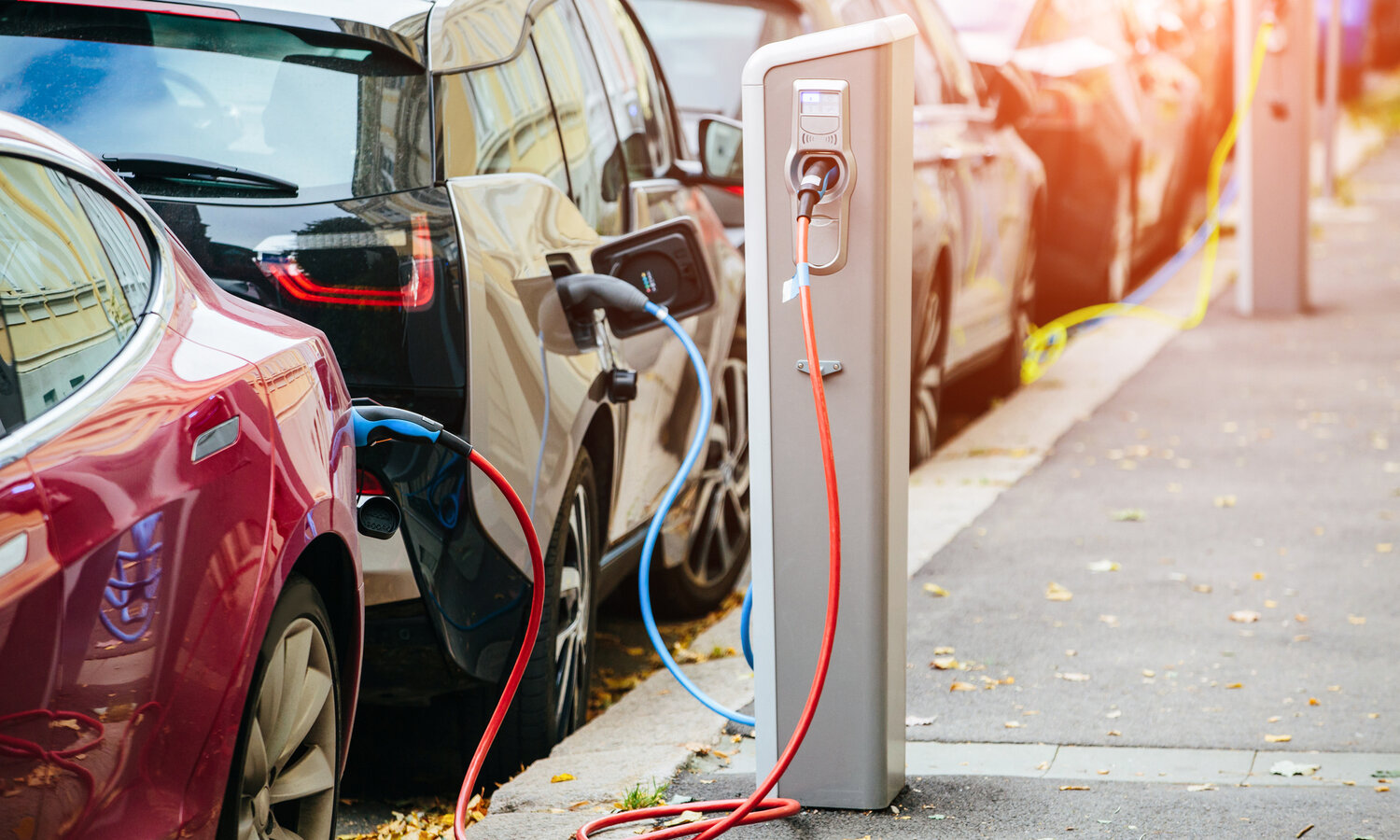Funding the Future of the National EV Charging Network
Articles, EV

As you likely know by now, electric vehicles serve as a cleaner, more fuel-efficient means of transportation compared to the gas-powered cars we’ve come to know all too well.
Even though EV technology has been around for over 100 years, the framework required to support electric vehicle adaptation around the world – such as battery capacity and charging infastructure – simply hadn’t been available.

But it seems like that’s all about to change soon.
Between recent legislation passed by the president and popular vehicle manufacturers planning to abandon internal-combustion vehicles altogether… It’s safe to say that electric vehicles are here to stay.
Before we get into what the future of transportation actually looks like, let’s see what the white house had to say about EV charging infrastructure.
Need a charge? The President’s footing the bill
The United States Departments of Transportation and Energy made an announcement that will prove to be a giant step towards making EV charging accessible for all US citizens.
In February of 2022, the US DOT announced the new National Electric Vehicle Infrastructure (NEVI) Formula Program.
This program was established by President Biden’s Bipartisan Infrastructure Law with the intention of establishing a nation-wide charging network for electric vehicles.
That’s right. You can expect to start seeing electric vehicle charging stations to start popping up in a similar way to how we see gas stations today.

The National Electric Vehicle Infrastructure Formula Program is allotted to provide approximately $5 billion over the next five years to create a cohesive network of electric vehicle charging stations, specifically along the interstate highway system.
Yeah, you read that right. Billions with a B.
In fact, $615 million was already made available to states by way of the NEVI Formula Program in fiscal year 2022 alone.
Now that we’ve established that electrical vehicle infrastructure is on the rise and on the way, let’s talk about what you could expect to see in your state.
What does a public charging station look like?
Great question.
In order to charge an electric vehicle, a plug is inserted into the charging port of the EV, while the other end is connected to an electrical outlet – on a public charging station, or for at-home charging stations, the same outlet that powers the home’s appliances and lights!
These charging stations operate by distributing power to your vehicle after harnessing electricity from one of several sources.
So when you’re pulling up to the pump to charge your electric vehicle, you can expect to see something like this:

Seems intuitive enough, right?
But there’s a lot more that meets the eye when it comes to EV charging stations. This technology is responsible for distributing a lot of electric energy, so it’s critically important that this technology is sleek, secure, and only accessible by authorized personnel.
That’s where DIRAK comes in. Between providing charging plug access to drivers and allowing maintenance personnel to access internal components, finding the access solutions to secure EV charging stations has proven to be a challenge for EV charging equipment designers.
DIRAK offers proven access solutions perfect for EV charging stations such as:
- Clip-on sealing profiles to ensure no moisture gets inside the enclosure.
- Concealed hinges for surface-mounted doors providing increased security in small spaces.
- Electronic locks and latches and latches that provide an additional layer of protection and access control.
- Multipoint compression latches for increased latch strength, panel compression and security.
And there’s plenty more where that came from. DIRAK and our electronic access control brand E-LINE by DIRAK specialize in creating innovative hardware for enclosure security.
Wrapping Things Up…
Electric vehicle technology has been around for years, but the infrastructure to support national (or even regional) adaptation hasn’t been established.
Thanks to the NEVI Formula Program, it seems like we could expect EV’s to become a staple in our society quite soon. With $5 billion allocated for expanding EV charging infrastructure, there’s never been a greater need for precise and pioneering hardware to secure said technology.
Contact a DIRAK expert today using the form below for more information on how we can support your EV project.

FAQ
- Are EV charging stations free?
- While there are some public stations that are completely free, they are much less common than those that require some form of payment. Generally speaking, most EV charging stations will charge by the kilowatt-hour (kWh), for around 14 cents per kWh.
- While there are some public stations that are completely free, they are much less common than those that require some form of payment. Generally speaking, most EV charging stations will charge by the kilowatt-hour (kWh), for around 14 cents per kWh.
- What is an EVSE port?
- Usually housed within a charging post (which could hold just one, or multiple EVSE ports), an EVSE port provides the power to charge an electric vehicle.
- Usually housed within a charging post (which could hold just one, or multiple EVSE ports), an EVSE port provides the power to charge an electric vehicle.
- What is a connector?
- Sometimes referred to as a plug, a connector is the physical component that must be plugged into an electric vehicle in order to charge it.
